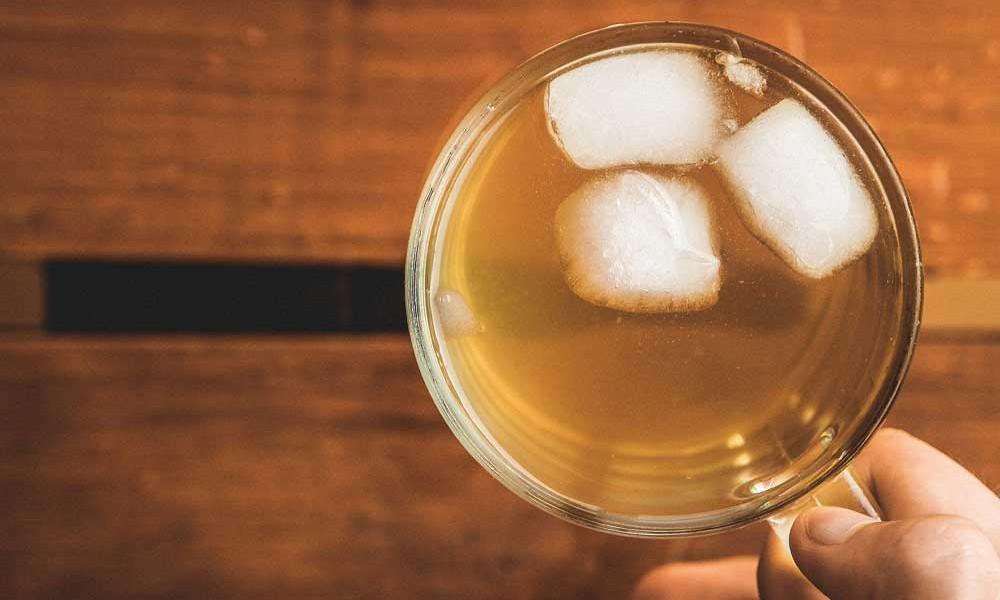
How To Make Kombucha
A word about fermented food and drink
For those “fermenting” sceptics, fermented foods have been through a process of lactofermentation where natural bacteria feed on the sugar and starch creating lactic acid. This process preserves the food, and creates beneficial enzymes and most importantly different strains of probiotics (which our guts LOVE). Natural fermentation of foods has also been shown to preserve nutrients and break the food down to a more digestible form which explains the link between eating fermented foods and improved digestion.
Eating fermented foods and drinking fermented drinks like Sauerkraut, Kefir and Kombucha will introduce beneficial bacteria into your digestive tract and help the balance of bacteria. Probiotics have also been shown to help slow or reverse some diseases, improve bowel health, and improve immunity (so many wins)! Having the proper balance of gut bacteria and digestive enzymes helps you absorb more of the nutrients in the foods you eat. Pair this with a healthy diet, and you will absorb many more nutrients helping to increase energy levels, your skin will be glowing and your gut will be loving you right back!
Incorporating healthy foods into your diet can sometimes get expensive, but not so with fermented foods. Kombucha, Kefir and Sauerkraut can be made at home and cost only a few dollars for a few weeks’ worth of goodness. And best of all they are SUPER easy to make and require minimal maintenance and can last up to months without going off.
So, what’s a Kombucha?
Kombucha, ahh beloved Kombucha. Have you heard of the beverage the ancient Chinese called the “Immortal Health Elixir?” It’s been around for more than 2,000 years with a rich history of health benefits. This magical beverage is made from sweetened tea that has been fermented by a crazy little critter called a SCOBY, a symbiotic culture of bacteria and yeast. Let’s talk about the SCOBY. It’s weird, right?! It floats, it’s rubbery and slightly spongy, brown stringy bits hang from it, and it transforms sugary tea into something fizzy and sour. It’s totally weird. But if you take a step back, it’s also pretty awesome. It can also be known as a “mother” because of its ability to reproduce, or “mushroom” because of its interesting appearance.
The SCOBY bacteria and yeast eat most of the sugar in the tea, transforming the tea into a refreshingly fizzy, slightly sour fermented (but mostly non-alcoholic) beverage that is relatively low in calories and sugar (Yay!).
Kombucha is indisputably full of probiotics and other happy things that our guts love and that help boost our overall health, so I say drink it down!
Can you believe that something this good can actually be made from tea, of all things? Or that it can be made at home with a few very basic ingredients? Let me show you how!
Kombucha Recipe
Preparation Time: 15 min
Total Time: 7-21 days
Servings: 1 Litre bottle
Ingredients:
- 1 litre filtered water
- ¼ cup organic white sugar (normal or raw is fine – the bacteria do not like the fancy sweeteners like rapadura or stevia)
- 2 organic black tea bags (many say non-organic tea just doesn’t work as well)
- ½ cup pre-made kombucha liquid (from a previous batch or a commercial one in a bottle)
- 1 SCOBY (you can buy these online or phone a friend who has a spare)
- Fresh ginger, cut into match sticks
- Fresh Turmeric or ground
How to make it:
- Bring water and sugar to a boil in a medium saucepan. Remove from heat, add tea bags, cover and allow to steep for at least 10-15 minutes. Remove tea bags and allow liquid to cool to around body temperature. Pour into a glass or ceramic jar (which you’ve sterilised with boiling water). The jar needs to be broad to allow plenty of contact with oxygen.
- Add pre-made kombucha (the liquid needs to be quite cool so you don’t kill bacteria) and then gently place the SCOBY on top (it may sink to bottom, this is OK). Cover the jar with a towel or muslin. I use a tea towel and secure it with an elastic band.
- Allow to sit for 7-10 days (7 will be plenty in warm weather). The temperature needs to be around 24C, so if it’s cool where you live, stick the jar on the top of the fridge.
- At the end of 7-10 days, a “baby” SCOBY will have formed on top of the liquid, the mother underneath. Remove both SCOBYs and store them in a glass container with a little kombucha liquid. Or use one to start a new batch straight away.
- Add fresh ginger and turmeric to the kombucha and screw cap on tightly.
- Let sit out for 4 to 5 days as a secondary fermentation. The longer you let it sit, the more carbonation will build up. (Caution, depending on your ginger, room temperature, and sugar content of your kombucha and length of this secondary fermentation, the carbonation can be surprisingly strong. Best to refrigerate after 4-5 days rather than leaving it out indefinitely, and open cautiously).
- Refrigerate and enjoy a shot every morning before breakfast.
Recipe sourced from Move Nourish Believe.
